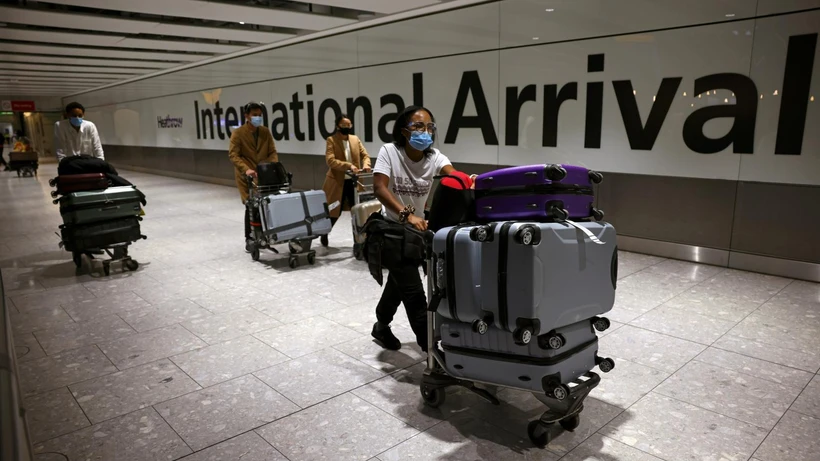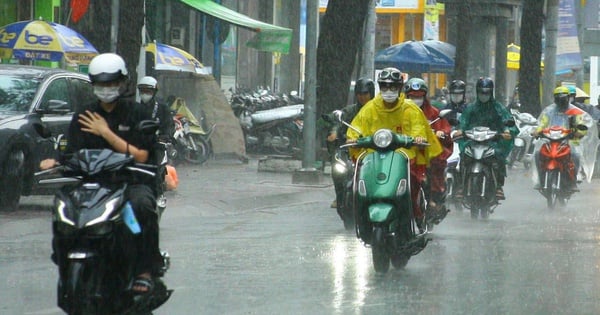Travelers should learn about heatwave issues so that a vacation to extreme weather destinations doesn't turn into a disaster.
CNN recently posted tips for tourists to travel safely to places affected by heat waves.
Locations affected by heat waves
Destinations across the United States, Europe and Asia are experiencing scorching summers as global temperatures rise. In the United States, temperatures in Death Valley, California, the hottest place on Earth, reached 123 degrees Fahrenheit (53 degrees Celsius) in the middle of the month, according to the National Weather Service. Travelers in Texas and Florida have also been dealing with particularly hot weather over the past few weeks. On July 18, the average temperature in Arizona was 111 degrees Fahrenheit (43 degrees Celsius).
In Europe, Italian and French officials have issued health warnings due to the extreme weather. The Italian health ministry has issued a red weather alert, indicating a potential health threat to those exposed to the heat. The heatwave has affected at least 23 cities in Italy, with temperatures hovering around 40-44 degrees Celsius (104-114 degrees Fahrenheit) over the past week. Earlier in the week, several tourists in Italy collapsed from heatstroke, and a British tourist passed out near the Colosseum.
The heat is also intensifying in Spain, with authorities on the popular summer holiday island of Mallorca warning visitors as average temperatures are forecast to reach 43 degrees Celsius.
Last week, the Greek Ministry of Culture even had to issue a regulation to close the Acropolis in Athens between 11am and 5pm due to the peak heat.

Photo: Reuters/Guglielmo Mangiapane.
China recorded its highest ever temperature last weekend, as temperatures rose to nearly 52 degrees Celsius in Xinjiang.
Global temperature records have been broken repeatedly in recent weeks and the heatwave is expected to continue in many countries around the world. According to preliminary data from the World Meteorological Organization (WMO), June marked the highest average global temperature ever recorded and the heat wave continued into July.
WMO Secretary-General, Professor Petteri Taalas, said extreme weather events are becoming more frequent as the Earth warms, with major impacts on human health, ecosystems, economies, agriculture, energy and water resources.
In areas with scorching temperatures, tourists may have difficulty traveling, forcing them to change or cancel their travel plans. Young children or older travelers with chronic health conditions are at increased risk of heat-related health risks. Travelers traveling to areas where heat is forecast should stay up-to-date with local safety warnings. They may even consider canceling their trip if the heat wave is severe.
What to do when traveling to extreme heat?
Experts advise visitors to engage in outdoor activities in the morning. Since temperatures start to rise from around 11am, midday is the hottest time of the day. Temperatures continue to rise until early evening, and afternoon temperatures are much more oppressive than mornings.
Visitors should wash their hands, wrists, and especially their faces and arms with cool water as often as possible. In Europe, visitors can visit fountains that are everywhere. Also, take cool showers when possible and try to dry off. The Italian government advises people to spend at least three hours a day in air-conditioned environments. Visitors should find a cool museum, gallery or restaurant to avoid the heat in air-conditioned rooms.
In hot weather, prioritize loose-fitting, cool clothing, apply sunscreen regularly and reapply every few hours. Visitors can bring a paper fan or a handheld battery-powered fan to cool down.
The Centers for Disease Control and Prevention (CDC) advises travelers to drink more water than usual and not wait until they feel thirsty to drink. Prioritize foods with high water content such as green vegetables and salads, and eat fruits such as watermelon or grapes.
People with respiratory diseases should be careful when traveling in hot weather, and should check if their accommodation has air conditioning when traveling to Europe. Many places in Europe do not usually use air conditioning.
It is advisable to prepare travel insurance to cover medical expenses in case your health is affected by the heat, insurance will cover it.
Symptoms of heatstroke due to heat waves
If you experience any of the following symptoms, the CDC recommends that you seek immediate medical attention at a local clinic or hospital. Symptoms of heatstroke include a body temperature above 103 degrees Fahrenheit (39.4 degrees Celsius), hot and red skin without sweating, headache, dizziness, abdominal pain, and even unconsciousness. According to the CDC, people with heatstroke should cool themselves quickly with fans and cool water on the skin rather than drinking more fluids.
Heat exhaustion is characterized by heavy sweating, muscle cramps, fatigue, and pale skin. Some people may also experience headaches, dizziness, stomach pain, and fainting. People with chronic illnesses, the elderly, and young children and infants are at higher risk of health effects from heat.
Means of transport affected
Heatwaves can affect flights, with the average weight of planes flying to areas of extreme heat increasing, so passengers may be asked to cancel flights to ensure a safe weight for the flight. Train tracks and even roads can warp in extreme heat. In 2022, the city of London painted its railway tracks white and covered a bridge in foil to limit the impact of heatwaves. Additionally, travelers can easily get tired waiting for public transport in hot weather.
Air conditioning is not popular in Europe.
Air conditioning is common in many parts of the world, but it’s rare in Europe. This is a problem for many visitors to Europe in the summer. A 2018 study by the International Energy Agency found that less than 10% of European households have air conditioning, compared to 90% in the United States. If you book an Airbnb in Europe, expect it to be difficult to find a room with air conditioning. Most buildings in Europe are old-fashioned, which can get stuffy when the temperature rises. Visitors looking for air-conditioned accommodations can look to larger hotels in the city, which are expensive. Most beachfront accommodations do not have air conditioning.
Air conditioning is also rare at public transport stops in Europe, such as metro stations. You can download the Citymapper travel app to find air-conditioned public transport routes. If you are walking on the street and need to find an air-conditioned place to escape the heat, you can go to the cinema.
How long does the heat last?
There is no guarantee that the heatwave will ease in August at global tourist destinations, so travelers should stay updated. According to the latest update from the World Meteorological Organization (WMO), the heatwave in Europe shows no signs of abating and could last through August. In the southwestern United States, the extreme heat will continue until July 28. High temperatures will also affect the south-central and southeastern United States.
According to vnexpress.net
Source




![[Photo] Capital's youth enthusiastically practice firefighting and water rescue skills](https://vstatic.vietnam.vn/vietnam/resource/IMAGE/2025/4/3/3f8481675271488abc7b9422a9357ada)
![[Photo] Ho Chi Minh City speeds up sidewalk repair work before April 30 holiday](https://vstatic.vietnam.vn/vietnam/resource/IMAGE/2025/4/3/17f78833a36f4ba5a9bae215703da710)

























































































Comment (0)